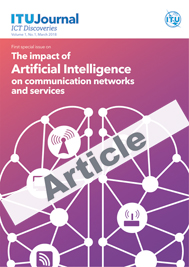 | Path loss prediction models are essential in the planning of wireless systems, particularly in built-up environments. However, the efficacies of the empirical models depend on the local ambient characteristics of the propagation environments. This paper introduces artificial intelligence in path loss prediction in the VHF band by proposing an adaptive neuro-fuzzy (NF) model. The model uses five-layer optimized NF network based on back propagation gradient descent algorithm and least square errors estimate. Electromagnetic field strengths from the transmitter of the NTA Ilorin, which operates at a frequency of 203.25 MHz, were measured along four routes. The prediction results of the proposed model were compared to those obtained via the widely used empirical models. The performances of the models were evaluated using the Root Mean Square Error (RMSE), Spread Corrected RMSE (SC-RMSE), Mean Error (ME), and Standard Deviation Error (SDE), relative to the measured data. Across all the routes covered in this study, the proposed NF model produced the lowest RMSE and ME, while the SDE and the SC-RMSE were dependent on the terrain and clutter covers of the routes. Thus, the efficacy of the adaptive NF model was validated and can be used for effective coverage and interference planning. |
|